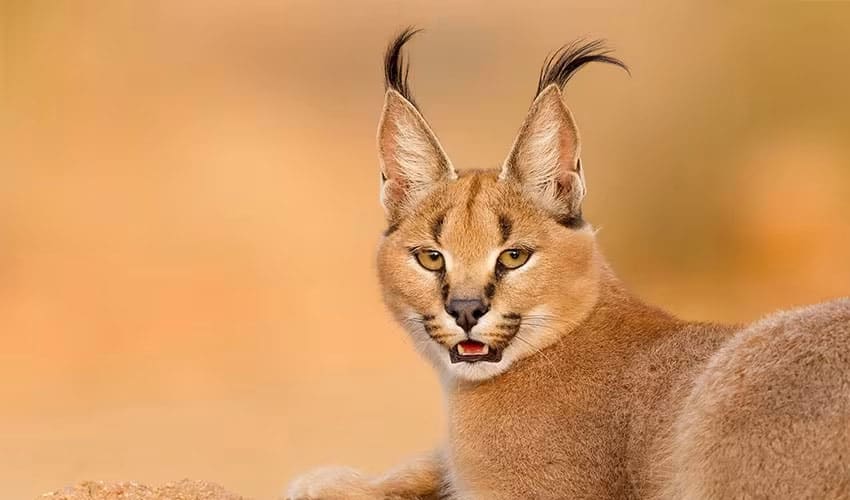Caracal
Genetically close to servals, this genus is considered monotypic with African golden cat in another genus Profelis
A medium-sized wild cat native to Africa, the Middle East, Central Asia, and India, the caracal’s distinctive, robust build sets it apart from other felines within its range. Recognizable by its reddish-tan or sandy-colored coat, the caracal is superbly adapted to blend into the arid and semi-arid landscapes it predominantly inhabits. This natural camouflage plays a crucial role in its hunting strategy, allowing it to approach prey with stealth and precision.
One of its most striking features is its long, tufted ears, which not only contribute to its sharp hearing but also aid in communication and expression. Additionally, the caracal has long legs and exceptionally long canine teeth, enabling it to deliver powerful bites to its prey. These physical adaptations, combined with its muscular build, make the caracal an agile and efficient predator, capable of taking down prey much larger than itself.
Caracals are versatile hunters and primarily carnivorous, preying on a wide variety of animals including rodents, birds, small mammals, and occasionally larger prey such as antelopes. They are known for their remarkable ability to leap into the air to catch birds in flight, a skill that highlights their agility and precision. Caracals employ a variety of hunting techniques, including stalking and ambushing, relying on their acute senses to locate and stealthily approach their prey before delivering a swift and lethal attack.
Despite their adaptability and widespread distribution, caracals face several conservation challenges. Conflict with humans arises from the caracal’s predation on livestock, leading to retaliatory killings by farmers and herders seeking to protect their animals. Furthermore, the illegal pet trade poses a significant threat, with caracals being captured and sold for their exotic appeal.
Species in this genus
Caracal
“To put the cat among the pigeons” was phrased on caracals, as they were once trained for hunting game birds for Persian and Indian royalty

